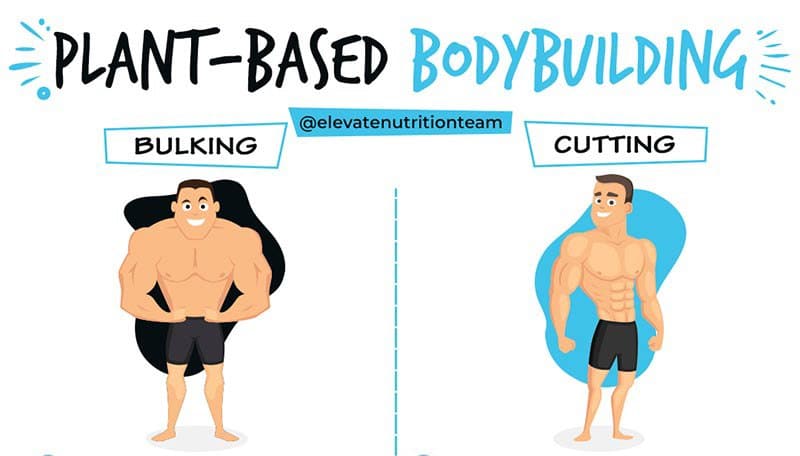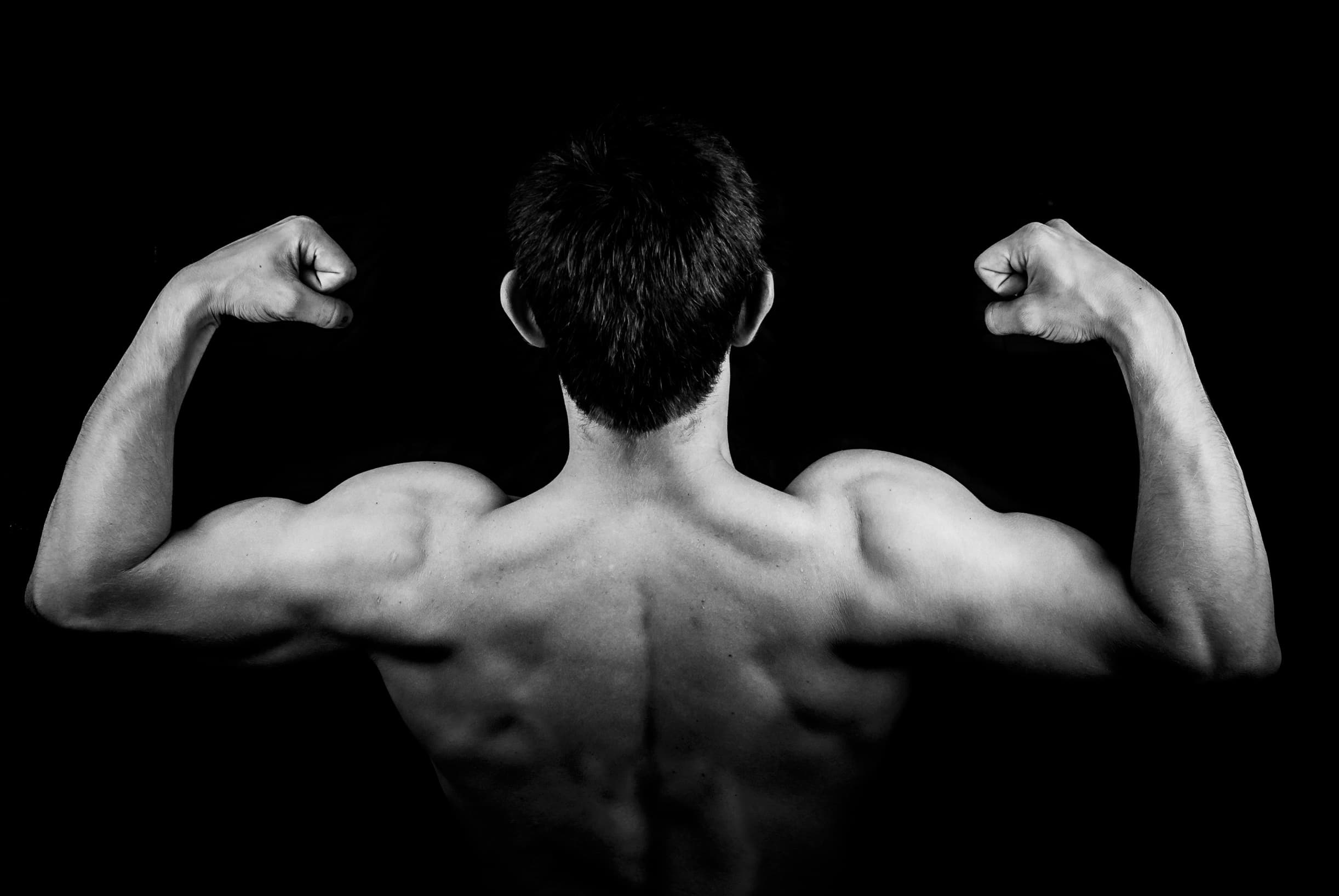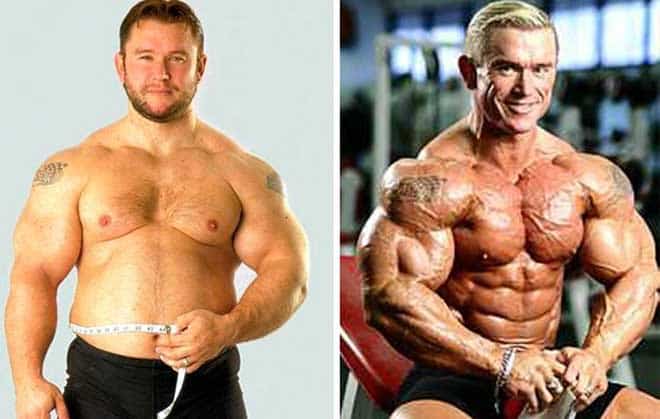Table of Contents
Bulking And Cutting- Which Is The Right Strategy For You?
Bulking and cutting are two common strategies to gain strength and muscle. These are more commonly strategic periods of weight loss and weight gain.
While you may be familiar with other strategies, you may be wondering about the downsides and upsides of bulking and cutting with their pros and cons.
This article explains the differences between bulking and cutting with other essential things you must learn as a fitness enthusiast.
Bulking and cutting- all you need to know
What is bulking?

Bulk is a time when you eat in a strategic calorie excess. That is, the time you’re bulking, you consume more calories compared to calories you burn. The aim is to acquire weight, mainly due to increased muscle mass.
People generally start bulking and HIIT (high-intensity resistance training) to boost their strength and muscle gain.
You can achieve this adequately controlled fashion, which people often call a clean bulk, or a different liberal approach usually called a dirty bulk.
With both these approaches, the aim is to eat surplus calories compared to what you burn to boost muscle gains.
What is cutting?
A cut is a time of consuming fewer calories or being at a calorie deficit as a mechanism to shed body fat while preserving as much muscle mass as attainable.
While resistance training resumes playing a part during the cutting phase, you might not be capable of lifting weight with a similar intensity as you can when you follow a bulk.
This is because of several factors involved, though the primary reason is that you have less stamina or energy available.
Athletes and bodybuilders often execute a cutting phase after practicing a period of bulking or before their competitive season or leading up to a competition.
Bulking and cutting are two different phases for athletes. If you are keen to learn how to begin bulking or cutting, here’s what you need to know.
How to start a bulk

When beginning a bulk, the initial step is to select the maintenance calories — this refers to the number of calories you require to hold your weight on the scale. Different online calculators are available to help you calculate this number.
You then go for a 10–20% calorie consumption in excess. For instance, a 175-pound or 79-kg man of moderate size would combine approximately 250–500 calories to the daily calorie intake.
On the other hand, a 135-pound or 61-kg woman of moderate size would combine approximately 200–400 calories to daily intake.
From there, strive for an everyday protein consumption of 0.7–1 gram per pound of your body weight (which is 1.6–2.2 grams every kg) to sustain muscle gain. The remaining everyday calories are made of fats and carbs. However, this is based on your personal preference.
You might find it helpful to follow your daily intake with the help of any smartphone apps that helps track calories and inform you what to eat.
Weigh yourself once in a while to check progress, hitting for a weight gain of nearly 0.25–0.5% body weight every week.
If the number on the weight scale is not moving after a couple of weeks, slowly expand your weekly calorie consumption by 100–200 calories.
People generally pair bulk and high-intensity resistance training to expand their muscle gains. Based on your goals, a bulking phase can stay anywhere, starting from 1 month to more than six months or longer.
Let’s see how to start a cut when you are done with bulking.
How to start a cut
For starting cutting, it is also beneficial to find out the maintenance calories or the number of calories you require to eat every day to sustain your weight.
From there, rather than combining more calories, you will need to subtract a provided number of calories every day. In other words, you will eat lesser calories compared to what you need to hold your body weight. This will assist in stimulating fat loss.
An average active man requires approximately 2,600 calories daily to sustain weight, whereas an active woman requires around 2,000 calories.
That said, calories more weight maintenance can differ substantially based on different factors such as activity level, body size, and genetics.
A general rule is to take 500 calories below your maintenance calories to promote weight loss. While initially thought this would help you shed around 1 pound or 0.45 kg every week, exact weight loss varies between people and might differ over time.
Research indicates that a gradual weight loss of 0.5–1% every week might be most reasonable for maximizing muscle upkeep.
To help sustain muscle mass, it is best to maintain your protein intake relatively high at 0.6–1.4 grams every pound (1.4–3.1 grams per kg) of your body weight and persist in performing high-intensity resistance training.
You can test what works satisfactorily for you within this range. In addition to an incremental calorie limitation through diet, cutting phases generally involve step counting or some form of cardio to grant added calorie-burning or fat loss.
Generally, a cutting phase is shorter than the bulk, typically lasting 2–4 months only.
It might be most suitable to stick to a cutting schedule for the tiniest portion of the time you require to meet your plans. This might help you maintain muscle mass throughout the procedure.
Pros and cons of bulking and cutting

Both bulking and cutting have several benefits when mixed with a reasonable resistance training schedule.
That said, there are a few downsides to being mindful of bulking and cutting.
Pros and cons of bulking
Pros of bulking
- Promotes healthy libido
- Increases bone density
- promotes muscle mass or muscle gain
- allows for more efficient recovery from workouts
- increases strength
Cons of bulking
- Can affect the blood value
- can decrease athletic performance
- may make you feel slightly sluggish
- can read to surplus fat gains
- can decrease insulin sensitivity
Pros and cons of cutting
Pros of cutting
- Permits for better athletic activity
- can increase insulin sensitivity
- may promote enhancement in blood value.
- you might find it to improve muscle appearance
- promotes fat loss
Cons of cutting
- may affect sleep quality
- can decrease bone density
- can reduce certain sex hormones and libido
- you might feel hungry
- slight muscle loss is common
When you follow bulking and cutting, it is crucial to know what to eat and what to avoid because some foods help with bulking while others help with cutting.
Food to eat and limit with bulking and cutting

Bulking foods
Bulking and cutting both require attention when it comes to the right food. It is most acceptable to concentrate on foods enriched in calorie content and nutrients to boost rapid strength and muscle gains when following a bulk.
In general, remain clear of high-calorie ultra-processed foods. Some people might incorporate these foods when going for a dirty bulk, in which extra fat gain is not a concern. However, such a practice is not suggested.
Foods to eat-
- Lean proteins: fish, chicken, beef, turkey, cottage cheese, Greek yogurt, pork, reduced-fat cheese, bars, protein powders, and mass gainers, as well as eggs, tempeh, and tofu.
- Healthy fats: nut butter, avocado, nuts, olive oil, fatty fish, and seeds like flax, hemp, and chia seeds.
- Legumes: all beans, comprising chickpeas, kidney, black, navy, with Great Northern beans.
- High-quality carbs: rice cakes, quinoa, whole grain pasta, oats, breakfast cereals, white and brown rice, and white and sweet potatoes.
- Fruit: apples, pineapple, bananas, oranges, grapefruit, and other types of berries
- Non-starchy vegetables: asparagus, peppers, green beans, zucchini, mushrooms, onions, carrots, tomatoes, and celery
- Cruciferous veggies: broccoli, Brussels sprouts, cauliflower, and cabbage.
- Dark leafy greens: spinach, kale, collard greens, and Swiss chard.
- Beverages: water, coffee, seltzer, diet soda, kombucha, tea, and 100% fruit juice.
- Occasional foods: pizza, baked goods, regular pasta, full-fat cheese, pan-fried meats, and high sugar breakfast cereals.
Foods to limit
- Highly processed foods: deep-fried foods, ham, chips, fast food, sausage, and full-fat ice cream, with processed meats like bacon, salami, and pâté
- Saturated fats: margarine or certain oils
- Beverages: soft drinks, sweet tea, sweetened coffee, lemonade, and other sweet or sugary drinks.
Cutting foods
If you’re following the cutting strategy, your emphasis must be on eating foods enriched in nutrients and have fewer calories. These will help gradual weight loss and maintenance of muscle mass.
You’ll notice that a few of the foods for a cutting diet are pretty similar to those used in bulk. The dissimilarity is mainly in the amount of these foods ingested.
Foods to eat
- Lean proteins: chicken breast, eggs, egg whites, lean ground turkey, low-fat cheese, lean cuts of beef or pork, low-fat cottage cheese, fish, high protein meat, extra firm tofu, and plant-based meat substitutes.
- Little healthy fats: olive oil, seeds, avocado, nuts, and kinds of butter.
- Legumes: all beans, kidney and chickpeas, black, navy, and Great Northern beans.
- Fibrous carbs: brown rice, oats, quinoa, rice cakes, sweet potatoes, whole grain pasta, and low sugar cereals.
- Lower sugar fruits: apples, plums, pears, peaches, kiwi, berries, figs, melon, grapefruit, and oranges.
- Non-starchy vegetables: asparagus, celery, broccoli, Brussels sprouts, peppers, green beans, cauliflower, zucchini, mushrooms, cabbage, onions, and tomatoes.
- Dark leafy greens: spinach, kale, Swiss chard, and collard greens.
- Beverages: water, mineral water, sugar-free flavored seltzer, and unsweetened tea and coffee.
Foods to limit
- High-calorie foods: pizza, baked goods, deep-fried foods, creamy pasta sauce, fast food, gyros, ice cream, and sure casseroles.
- High-fat proteins: fatty cuts of beef and pork, average ground chicken and turkey, chicken wings and thighs, bacon, and fatty fish
- Sugar-sweetened beverages: soft drinks, sweetened coffee and tea, iced tea, juices, lemonade, and nectars.
- Processed foods: most frozen prepackaged ham, chips, meats, pâté, packaged cookies and cakes, salami, and packaged ramen noodles.
Additional Recommendations On Bulking And Cutting

When determining whether bulking and cutting are suitable for you or not, evaluate your beginning point and long-term objectives.
Suppose you are entirely new to working out and pursuing a structured diet. In that case, it might be best to begin by enhancing your food choices and gradually increasing the exercise intensity before bulking and cutting.
Once you have developed promising practices encompassing food intake and exercise, you can assess whether bulk or cut is the correct choice for you. If you aim to achieve muscle mass and strength and are not worried about gaining a little bit of fat in the procedure, bulk might be better.
On the other hand, if you want to shed fat and preserve muscle mass, a cut might be more in line with the objectives you are aiming for. For more guidance, you should confer with a registered dietitian.
How long should I spend bulking? How long should I spend cutting?
The best solution for an excellent duration of bulking and cutting every cycle will differ from your objectives. In general, you must predict to pay at least 4-6 weeks in any bulking and cutting cycle; any less time drives it doubtful that you will see much in the way of outcomes. Longer cycles tend to be more useful with a few cautions.
First, an effective bulking cycle is typically at least 3-4 months, if not any longer. This can be challenging for some people who are even incredibly on top of their macronutrients. They will likely acquire some fat and gain muscle in a bulking cycle. For example, a few people have difficulty with the 5 lbs of fat they may acquire along with 15-20 lbs of muscle mass.
We will look at balancing the macronutrients to assist in limiting the extra fat growth with clean eating, but you still must be ready to assume some fat gain. Another point to effective bulking is making sure that you’re performing the right amount of weight lifting to assist for the caloric boost in your diet go directly to build muscle.
The most useful cutting cycles are usually shorter than the most useful bulking cycles; most satisfactory results are usually seen in an 8-12 week cutting period. Practically, a cutting cycle will always include exercising (with a more prominent emphasis on lower weights, higher reps, and cardio for more high-calorie expenditure) and a caloric consumption more minor than the mixture of your calorie expenditure through workouts and basal metabolic caloric expenditure.
Be mindful not to cut caloric consumption drastically, or you will end up altering your basal metabolic rate inadvertently— making it tougher to cut short. You can avoid this by using a calorie tracker application with a workout tracker app.
Can you do bulking and cutting simultaneously?
Some individuals might want to achieve muscle mass while losing fat in a few situations. People refer to this process as body recomposition.
While this might seem possible in theory, it’s typically only achievable in a few specific cases:
- if you are a complete beginner to training
- if you have extra weight or you are obese and have a considerable amount of body fat
- if you have been on anabolic steroids for some time now.
Athletes with a fair deal of training find it challenging to build muscle and shed fat at the exact time correctly.
How to gain the best results with bulking and cutting
To optimize the best effects of bulking and cutting, it might be best to do them alternatively in cycles.
For instance, if you initially want to put on some strength and muscle size, you might want to begin with a period of bulking. While you might have put on a fair deal of muscle during that period, you might have also acquired some fat in the procedure.
At one point, you might start a period of cutting to shed the extra fat you acquired while retaining the new muscle you built.
In theory, the cycling mentioned above will permit you to gain muscle while limiting you from slowly accumulating excess fat.
Bulking And Cutting- The bottom line
Bulking and cutting are great complementary strategies used by bodybuilders most often. These are implemented one after the other to achieve muscle mass and lose fat. While bulking and cutting come with some impressive benefits, there are a few possible downsides you must bear in mind.
A bulking diet comprises nutrient-rich and calorie-dense foods to boost muscle gains. On the other hand, a cutting diet concentrates on nutrient-dense, lower-calorie meals to promote fat loss.
To determine which strategy, to begin with, evaluate your present body composition and long-term strength and muscle goals. As with any significant change to the diet or workout regimen, it’s essential to consult a healthcare provider before beginning aggressive bulking and cutting if you have an underlying health ailment.
To gain more knowledge about bulking and cutting, try discussing with your dietician. As a beginner, don’t start bulking and cutting without proper information and guidance from an expert trainer. Otherwise, you may end up avoiding foods that are genuinely needed for nutritional benefits and the healthy functioning of your body.
You can try performing these yoga exercises for weight loss after bulking along with HIIT workouts.


